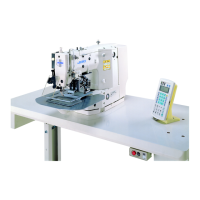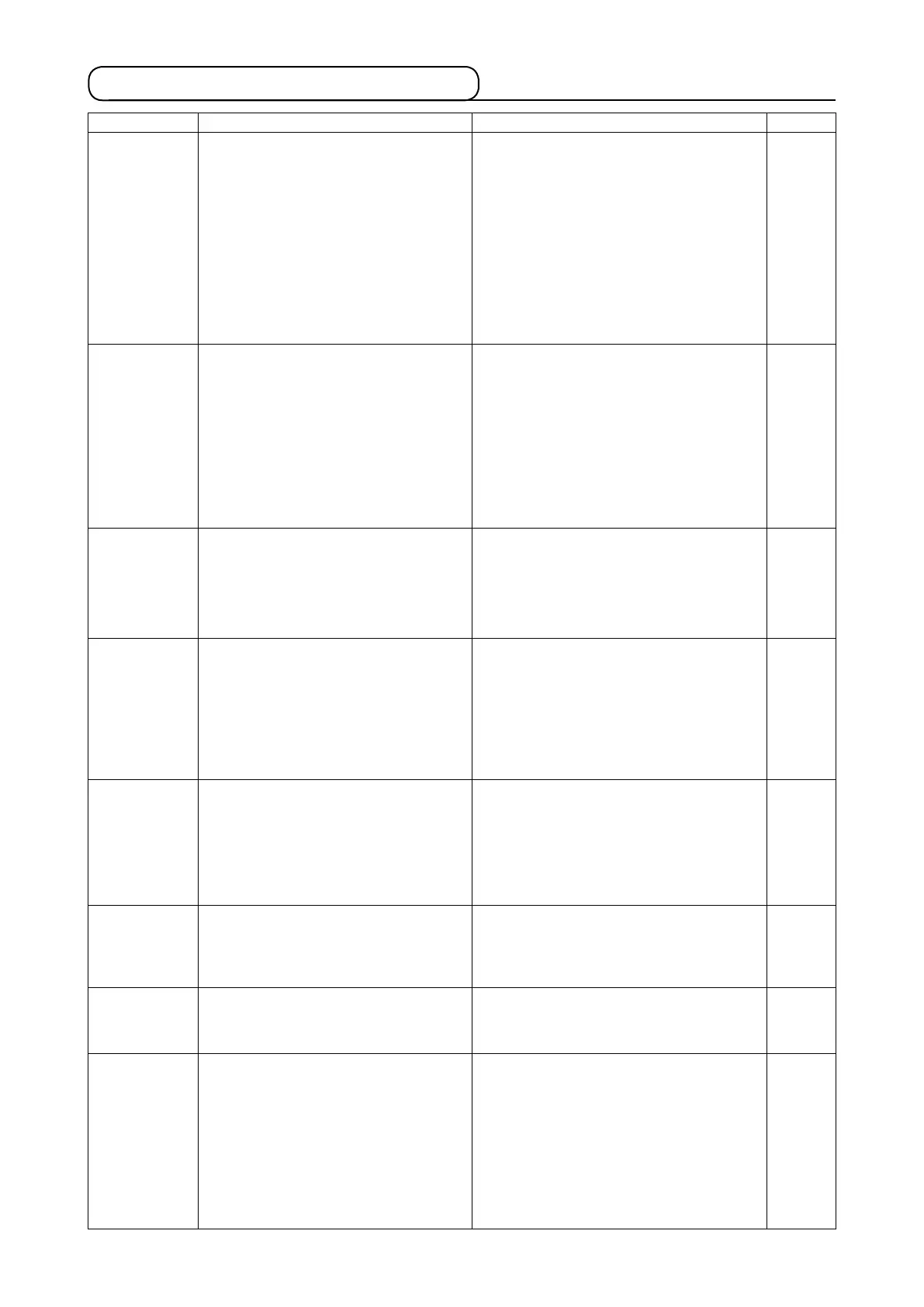-
62
-
9-4. Troubles and corrective measures
Trouble Cause Corrective measures Page
1. The needle
thread slips
off at the start
of bar-tacking.
①
Stitches are slipped at the start.
◦
Adjust the clearance between the needle
and the shuttle to 0.05 to 0.1 mm.
46
◦
Set soft-start sewing at the start of bartack-
ing.
52
②
The needle thread remaining on the
needle after thread trimming is too
short.
◦
Correct the thread tension release timing of
the thread tension controller No. 2.
48
◦
Increase the tension of the thread take-
up spring, or decrease the tension of the
thread tension controller No. 1.
17, 18
③
The bobbin thread is too short.
◦
Decrease the tension of the bobbin thread. 17
◦
Increase the clearance between the needle
hole guide and the counter knife.
47
2. Thread often
breaks or
synthetic ber
thread splits
nely.
①
The shuttle or the driver has scratches.
◦
Take it out and remove the scratches using
a ne whetstone or buff.
②
The needle strikes the work clamp foot.
◦
Correct the position of the work clamp foot.
③
Fibrous dust is in the groove of the
shuttle race.
◦
Take out the shuttle and remove the brous
dust from the shuttle race.
④
The needle thread tension is too high.
◦
Reduce the needle thread tension. 17
⑤
The tension of the thread take-up
spring is too high.
◦
Reduce the tension. 17
⑥
The synthetic ber thread melts due to
heat generated on the needle.
◦
Use silicone oil. 64
3. The needle
often breaks.
①
The needle is bent.
◦
Replace the bent needle. 15
②
The needle is too thin for the material.
◦
Replace it with a thicker needle according
to the material.
③
The driver excessively bends the nee-
dle.
◦
Correctly position the needle and the shut-
tle.
46
④
The feed timing is too late.
◦
Advance the feed operation timing. 52
4. Threads are
not trimmed.
①
The counter knife is dull.
◦
Replace the counter knife.
②
The difference in level between the
needle hole guide and the counter knife
is not enough.
◦
Increase the bend of the counter knife.
③
The moving knife has been improperly
positioned.
◦
Correct the position of the moving knife. 47
④
The last stitch is skipped.
◦
Correct the timing between the needle and
the shuttle.
46
5. Stitch skipping
often occurs.
①
The motions of the needle and shuttle
are not properly synchronized.
◦
Correct the positions of the needle and
shuttle.
46
②
The clearance between the needle and
shuttle is too large.
◦
Correct the positions of the needle and
shuttle.
46
③
The needle is bent.
◦
Replace the bent needle. 15
④
The driver excessively bends the nee-
dle.
◦
Correctly position the driver. 46
6. The needle
thread comes
out on the
wrong side of
the material.
①
The needle thread tension is not high
enough.
◦
Increase the needle thread tension. 17
◦
Retard the feed operation timing. 52
②
The needle thread after thread trimming
is too long.
◦
Increase the tension of the thread tension
controller No. 1.
17
7. Threads
break at time
of thread trim-
ming.
①
The moving knife has been improperly
position.
◦
Correct the position of the moving knife. 47
8. When
synthetic
ber thread is
used, at the
start or end
of sewing,
needle thread
rises or
remaining of
needle thread
is excessive.
①
In case of synthetic ber thread, the
thread is harder than other threads and
penetration resistance to material is
small.
◦
When making a pattern, set the sewing
pitch at the start and end of sewing to 1
mm or less.

